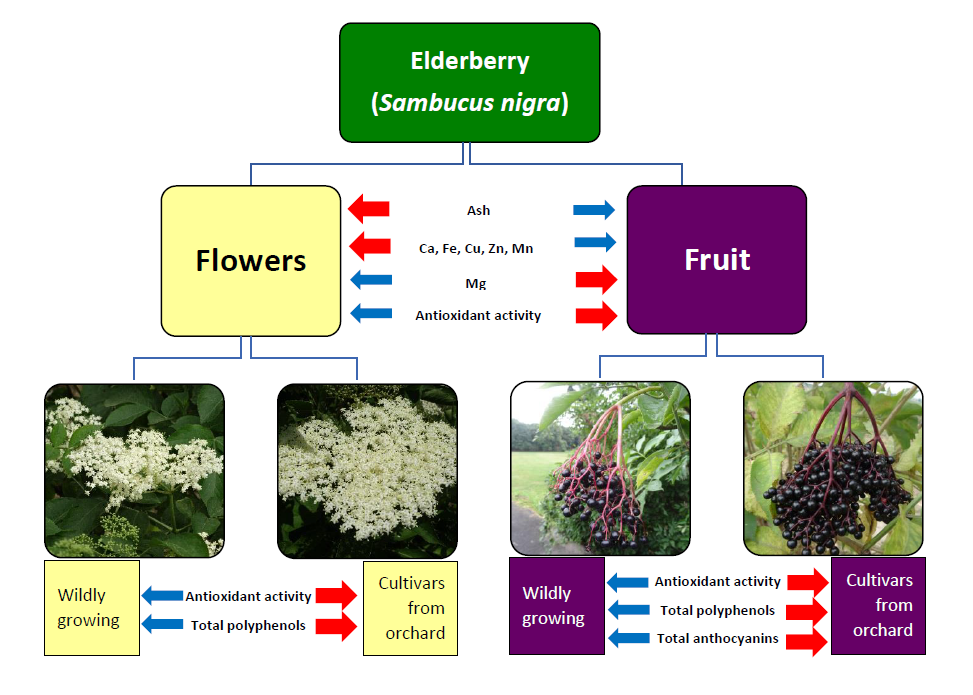This study compared the mineral content and bioactive properties of flowers and fruit coming from wild elderberry plants with those of flowers and fruit harvested from elderberry cultivars grown in an orchard. Elderberry fruit and flowers were analysed for the content of selected minerals, phenolic compounds and anthocyanins and for antioxidant activity. Mineral content was determined by atomic absorption spectrometry method, while antioxidant activity and the content of polyphenols and anthocyanins were determined by spectrophotometric methods. Flowers were found to contain more total ash and to have much higher content of most of minerals, except magnesium, which was present in high concentrations in fruit. Fruit showed significantly higher antioxidant activity than flowers, whereas the total phenolic content varied depending on the growing location / cultivar. The material obtained from selected cultivars growing in an orchard had higher antioxidant activity and polyphenol and anthocyanin content than the material obtained from wild plants. Fruit of the ‘Haschberg’ cultivar and flowers of the ‘Sampo’ cultivar had the best bioactive properties of the studied samples.

